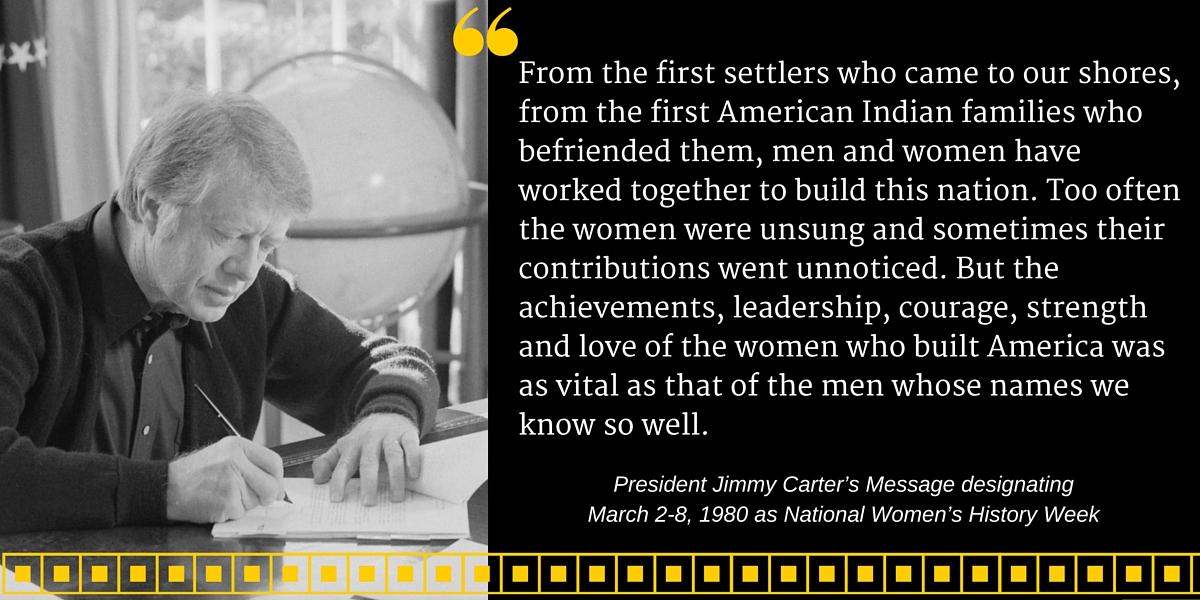Women's History Month

Every year March is designated Women’s History Month by Presidential proclamation. The month is set aside to honor women’s contributions in American history.
Women’s History Month began as a local celebration in Santa Rosa, California. The Education Task Force of the Sonoma County (California) Commission on the Status of Women planned and executed a “Women’s History Week” celebration in 1978. The organizers selected the week of March 8 to correspond with International Women’s Day. The movement spread across the country as other communities initiated their own Women’s History Week celebrations the following year.
In 1980, a consortium of women’s groups and historians—led by the National Women’s History Project—successfully lobbied for national recognition. In February 1980, President Jimmy Carter issued the first Presidential Proclamation declaring the Week of March 8th 1980 as National Women’s History Week.

Subsequent Presidents continued to proclaim a National Women’s History Week in March until 1987 when Congress passed Public Law 100-9, designating March as “Women’s History Month.” Between 1988 and 1994, Congress passed additional resolutions requesting and authorizing the President to proclaim March of each year as Women’s History Month. Since 1995, each president has issued a series of annual proclamations designating the month of March as “Women’s History Month.”
Each year the National Women’s History Project selects and publishes a theme. The 2017 theme is “Honoring Trailblazing Women in Labor and Business.” The theme honors women who have successfully challenged the role of women in both business and the paid labor force.
